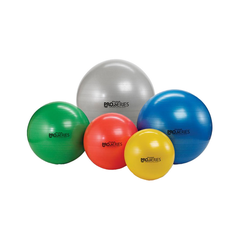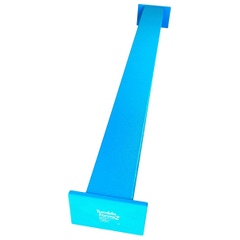If you work with children who have attention and behavioral issues, emotional and sensory overload, or poor motor skills, they may benefit from activities that build neural connections for higher learning. Children have very active brains and might find it difficult to focus on a task for too long. Brain breaks allow periods of rest from continuous studying to improve learning and reduce stress.
Children with autism/sensory processing disorders often seek heavy work. To sit still in a chair, their bodies and their brain require activities using resistance and stretching to calm down. Resistance bands can also help strengthen muscles and improve sitting posture.
In fact, all children have difficulty focusing for long periods of time and brain breaks can help.
Here are a few quick and easy exercises to help increase student alertness and productivity!
Why are Brain Breaks Important?
Brain breaks are planned learning activities that help mobilize different regions of the brain. A child’s brain needs to send signals from the sensory receptors to memory storage regions of the brain. Brain breaks allow the resting pathways to restore calm focus and provide improved mood, attention, and memory. Classrooms often use brain breaks to boost creativity, cognitive function, and social skills.
For more information on the effectiveness of brain breaks, watch this video here!
Generally, elementary students can focus for concentrated study periods of 10 to 15 minutes and middle and high school students for periods 20 to 30 minutes long.1 Children are then recommended 3–5-minute brain breaks to reduce fatigue, boredom, and distraction. Aim to create a reliable schedule with timed activities that won't take up too much of the time meant for academics. Tell your children in advance how long the brain breaks should last. This schedule provides your class with structure, making learning and playing activities more fun and exciting.
Depending on your students’ age and interest level, you can decide to dictate what the brain break activities will be. You can also allow your students to choose from a variety of options or let them come up with their own ideas. Unstructured play stimulates curiosity and creative thinking.
Benefits of Using Resistance Bands for Brain Breaks
Proprioceptive sensory input is the performance of tasks that involve heavy resistance and input to the muscles and joints. Resistance bands are essential in helping your student's body assimilate and process both movement (vestibular) and touch (tactile). Designed to offer multi-directional exercise, the bands work a child’s brain back-to-front, top-to-bottom, and right-to-left. Occupational and physical therapists love the heavy pull and proprioceptive feedback gained from just a few minutes with these stretch bands.

Resistance bands are adaptable to any fitness level or strength. Even small children can exercise with a resistance band safely and at a comfortable pace. Resistance bands can also help support your student’s posture, strengthening their upper body, lower body, and core muscles. By correcting posture, your class’s receptive and expressive language, auditory processing, retention, reading and writing will also improve.

For more resistance band exercises, check out 5 Resistance Band Exercises for Kids or watch this video.
More Products for Brain Break Activities
In addition to resistance bands, there are several other products offered to help regain a child’s focus!
- Exercise Balls: Designed to help improve body posture, coordination, cardio endurance, strength, muscle tone, and balance. These exercise balls can accommodate a wide range of heights. They’re available in a progressive color scheme to indicate the different ball sizes
- Therapy Putty: For a wide variety of strengthening exercises, the pliable therapy tool is designed to improve range of motion and flexibility. The putty can be stretched, pinched, pulled, squeezed, and rolled to target specific muscles and joints such as the wrists, forearms, and hands
- Balance Beam: Designed to provide an engaging and safe balancing activity, the versatility of this balance beam allows children to improve balance and maintain coordination. The beam also provides hours of entertainment while assisting in the improvement of motor skills
- Pegboard: This pegboard set includes 24 pattern cards with multiple levels of difficulty. The sensory motor manipulative tool aids in the enhancement and development of sensory motor skills
Try these 6 Resistance Band Exercises
We’ve come up with 6 exercises for you and your students to try in the classroom! They can also be done at home. Keep in mind that each of the exercises below are specifically designed to target different muscles and joints of the body. You will want to vary them day to day in order to ensure that your class is getting the most out of their resistance bands.
Back Band Exercise
- Whether it be on a soft carpet or cushioned floor mat, lie flat on your back
- Lift your legs in the air and stretch the resistance band over your feet with both hands
- Tightly pull the band with both hands toward your head
- Hold for 5-8 seconds before releasing and lowering your legs back down
Front and Back Arm Exercise
- Tie the resistance band at the end so it makes a circle. Stretch the band as wide as you can with both of your arms (or use a loop band if preferred)
- Gently bring one arm in front of the other and hold for 3-5 seconds
- Cross the band in front of your body and then stretch it over your head to stretch the band behind your head
Leg Lift Exercise
- Keep the resistance band tied together in a circle (or use a loop band if preferred)
- Standing with your back straight, put one foot inside the band and stretch it to the floor
- With both hands, pull the band as high as you can towards your chest or your head
- Slowly lift your leg so that your knee is bent. Lower back down and repeat the exercise with your opposite leg
Straight Leg Stretch
- Untie your resistance band. Hold one end of the band in one hand and the other in the opposite hand
- Press the band to the floor with both of your feet. Keep the ends in your hands so the band stretches to your hips
- Raise the band high, closer to your head for a wider stretch. Hold for 3-5 seconds before releasing
Crossing the Midline Stretch
- Press the band to the floor with both of your feet
- Hold one end of the band in one hand and the other in the opposite hand. Keep the ends in your hands so the band stretches to your hips
- Cross your arms over each other (right over left). Hold for 3-5 seconds before switching direction (left over right)
Stretching Lunge
- Hold one end of the band in one hand and the other in the opposite hand
- Stand on the band with your right leg
- Move your left leg behind you, lowering into a deep lunge
- To include a midline stretch, move your left arm over your right arm (opposite feet with opposite arms)
- Hold this position for 3-5 seconds before switching both legs and arms
More Classroom Activities to Improve Focus
Make sure to keep brain breaks varied and tailored to a specific outcome. If you are trying to boost a student’s mood, suggest a physical activity that gets them up and moving around. If a student needs to regain a sense of control, create an activity that forces them to concentrate, but also keeps them quiet.
When your classroom’s energy is low during the last period of the day, choose a recharging brain break! Put on some music and dance! Or try a fun game like ‘Would You Rather’. Your children will have 10 seconds to choose between two options, then 30 seconds to perform the matching activity.
When your class’s energy is high, such as before a big test, choose a refocusing brain break. Give each student a paper plate and have them walk around the room, balancing the plate on their head. Or try a deep breathing activity that teaches your students how to use shapes to help take deep breaths.
References
- Anonymous. (2019). 15 Super Simple Brain Break Exercises. Lemon Lime Adventures. Retrieved from https://bit.ly/3rjg023
- Kiley, Christie. (2014). How to Use Handee Band to Help Kids with Sensory & Motor Skills. Mama OT. Retrieved from https://bit.ly/2M1rLKn
- Willis, Judy. (2016). Using Brain Breaks to Restore Students’ Focus. Edutopia. Retrieved fromhttps://edut.to/38wcLvq
Medical Disclaimer: The information provided on this site, including text, graphics, images and other material, are for informational purposes only and are not intended to substitute for professional medical advice, diagnosis or treatment. Always seek the advice of your physician or other healthcare professional with any questions or concerns you may have regarding your condition.








 France
France Australia
Australia










